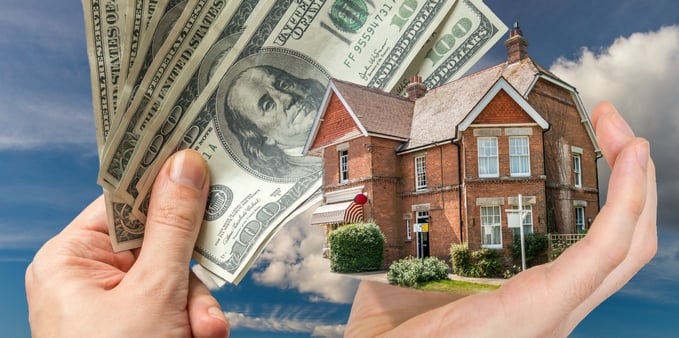5 Upgrades That Won't Add Value to Your Home

I previewed a beautiful home here near Joint Base San Antonio a few weeks back. I’d sold four homes in that neighborhood over the previous couple of months, and this couple needed to, as well; it was time to PCS.
I knew the floorplans in that neighborhood well. Only about 10 existed, and most of the homes were one of six floorplans. As soon as I drove up to this home, though, I saw that it was a little different. Not only had the couple purchased by far the largest floorplan, but they had added a lot of upgrades.
In a neighborhood of homes typically about 3,000 square feet, this home sat at a solid 4,500 square foot, about 500 feet larger than almost anything in the neighborhood as well as all of the surrounding neighborhoods.
In a VA Home Loan appraisal-dominated market, finding relevant comparables for a home of this size would be challenging, to say the least. I didn’t want to overprice the home for this couple and have an appraisal issue with financing.
Here was the challenge: To find a comparable home in that area, I would need to find several homes of no more than roughly 500 square foot greater or less than this home that had sold within the past six months.
Challenging, yes, but not impossible.
The devil is in the details, though. And, man, this couple went for the details.
To start, they had chosen every possible upgrade that the builder offered, and some that they didn’t. They added the most upgraded cabinets, the most expensive flooring, an iron rail banister, upgraded interior doors, upgraded window treatments, the most upgraded granite, and upgraded lighting fixtures. In total, they added about $40,000 in additional upgrades above and beyond what their neighbors had selected.
And then, three years later, they ripped most of them out.
They changed the colors.
In a $15,000 purchase, they replaced every item in their kitchen, adding new cabinetry, granite, and a backsplash. It wasn’t that anything was outdated in their previous kitchen--in fact, the color scheme was one of the most popular in the area--but rather, they wanted different colors, a different feel to their kitchen. He had received follow-on orders to the same duty station, and they wanted a change.
I can definitely appreciate wanting a different feel to your house; I, too, get bored of the colors of my cabinets. I see enough houses every day to get bursts of inspiration to convert my modern, espresso-colored cabinetry into a bright white, rustic, French country-chic, farmhouse-sink bedecked cooking extravaganza, but I probably won’t. I don’t plan on staying in my home forever, so it doesn’t make financial sense to make the investment.
When you are planning on staying in your forever home--an option that most of us who read the MilitaryByOwner blog don’t have just yet--then it’s advisable to not overspend on upgrades that you won’t get a lifetime’s worth of enjoyment out of.
Unfortunately, this family fell into the same category as the rest of us. This would not serve as their forever home, and with that many upgrades in the house, they didn’t want to see what might happen to their beautiful home if they converted it into a rental that they could later live in.
The problem was that no one had ever explained to them that adding money into your home doesn’t necessarily translate into adding value when it comes time to sell your home. While the new colors in the kitchen were nice, the extra expense did not increase the value of the home, because nothing about the substance of the home actually changed; it still had upgraded cabinetry, stainless appliances, and upgraded granite. Selling their home would mean a painful, expensive bill for this couple on closing day.
To help your family avoid this experience, I want to offer 5 tips for home buying choices that won’t add value to your home.
- Don’t buy the largest floorplan that the builder offers (unless everyone else is doing it). In our post on not overspending on your home a while back, we offered 7 tips to avoid overspending on your home. In it we discussed several principles of real estate. Essentially, you don’t want to spend far more than your neighbors in terms of either your purchase price or price per square foot.
- Don’t buy the smallest floorplan that the builder offers (again, unless everyone else is doing it, or I’ll add a caveat--unless they’ve created a street or section of the neighborhood for the smaller patio home option, and that you are building in that section). Buying the smallest home in the neighborhood doesn’t add value; it just typically means that your home will generally sit on the market for much longer than your neighbor’s home would in a resale; it’s not the value that the majority prospective homebuyers for that area are looking for.
- Changing modern colors to other modern colors. Well, I think we already reviewed that point. However, if you have outdated (or ugly) cabinetry, then refinishing the cabinetry in the kitchen and bathroom the cabinetry in the kitchen and bathroom offers a relatively inexpensive way to add value to your home!
- Adding features that don’t match either the home or the surrounding area. While you might really appreciate a gothic style of light fixtures, the aesthetics of ultra-modern chrome, or the visual appeal of a brick facade overlay on walls throughout the interior of your home, prospective homebuyers may not, particularly if the features don’t match the character of your home. If the rest of your neighborhood offers contemporary lighting fixtures and neutral walls, then don’t venture into spending territory too far beyond those boundaries, particularly if you plan to resell when you PCS.
- Consider before adding a swimming pool. This option can boost the value of your home by up to 7%, according to HouseLogic. However, if the other homes in your area do not have pools, you may want to consult a Realtor to determine whether adding a pool will add value to your home. In an area where pools abound, the answer is likely yes, but if not, then there might be a reason why families are choosing to not to add one. For instance, in a more cash conscious economy, such as San Antonio, a pool might mean a tougher time at resell.





